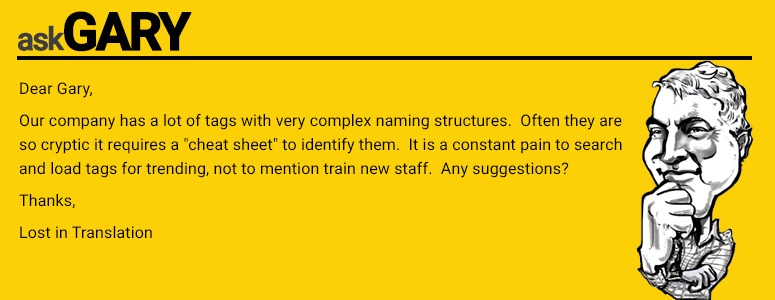The third edition of a weekly Question and Answer column with Gary Stern, President and Founder of Canary Labs. Have a question you would like me to answer? Email askgary@canarylabs.com
Dear Lost,
Thanks for writing. The problem you face is common in most industries. Larger organizations often follow more complex naming structures in order to best organize vast amounts of tags over many locations. However, that doesn't mean it has to be a daily chore for you or other staff to grab the data you need!
I think you need to use our Asset Model, a free product that is included with our Enterprise Historian. Asset Model allows you to "reshape your browse tree" by modifying tag organization and tag labeling without affecting the tag name or location. To accomplish this, you use regular expressions to create both Model and Asset Rules within our Asset Model.
Model Rules allow you to reshape your browse tree without actually changing the names of the tags. For instance, one recent client used an alphanumeric code at the end of tag names to represent the type of asset the tag was associated with, as well as the physical location of the asset. They created Model Rules that simplified the naming structure and replaced the alphanumeric code with common names. So a tag named "24TE_1220C_Comp_Outboard" in the historian can also be found within the Asset Model as "Lake Charles.Compressors.1220.Outboard Bearing".
Asset Rules allow you to group common tags based on the asset they represent. For example, if a group of 60 sensors all belong to a compressor you can organize them into an asset called "Compressor". The asset can have subgroups allowing you to designate assets within an asset. For instance, a compressor may have a group of tags that represent an interstage cooler, a water pump, and a motor. These rules can be applied universally, and create hundreds of assets without requiring hours of work.
Here is a quick video that will help demonstrate the concept.
When browsing for tags inside the trending tool Axiom, you have the choice to browse your Historian where the tags will present themselves based on their default organization and naming structure, or you can browse across the Asset Model which will allow you to see your newly created browse tree and assets. Axiom gives you the ability to quickly locate and load trends for assets, as well as compare multiple assets on a single chart. You can see more here.
Hope this helps saves you time and a bit of daily frustration!
President and Founder
Canary Labs
Have a question you would like me to answer? Email askgary@canarylabs.com




